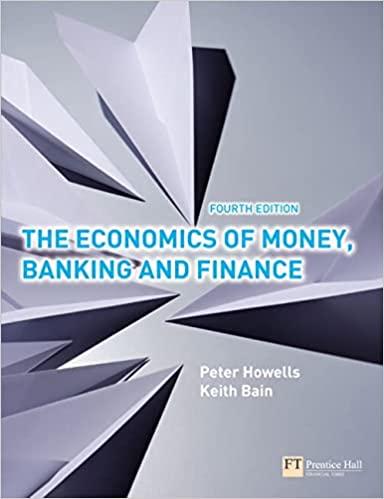Question
52. Money Market Versus Put Option Hedge. Narto Co. (a U.S. firm) exports to Switzerland and expects to receive 500,000 Swiss francs in one year.
52. Money Market Versus Put Option Hedge. Narto Co. (a U.S. firm) exports to Switzerland and
expects to receive 500,000 Swiss francs in one year. The one-year U.S. interest rate is 5% when investing funds and 7% when borrowing funds. The one-year Swiss interest rate is 9% when investing funds, and 11% when borrowing funds. The spot rate of the Swiss franc is $.80. Narto expects that the spot rate of the Swiss franc will be $.75 in one year. There is a put option available on Swiss francs with an exercise price of $.79 and a premium of $.02.
a. Determine the amount of dollars that Narto Co. will receive at the end of one year if it implements a money market hedge.
b. Determine the amount of dollars that Narto Co. expects to receive at the end of one year (after accounting for the option premium) if it implements a put option hedge.
Chapter 13
15. DFI Strategy. JCPenney has recognized numerous opportunities to expand in foreign countries and has assessed many foreign markets, including Brazil, Greece, Mexico, Portugal, Singapore, and Thailand. It has opened new stores in Europe, Asia, and Latin America. In each case, the firm was aware that it did not have sufficient understanding of the culture of each country that it had targeted. Consequently, it engaged in joint ventures with local partners who knew the preference of the local customers.
a. What comparative advantage does JCPenney have when establishing a store in a foreign country, relative to an independent variety store?
b. Why might the overall risk of JCPenney decrease or increase as a result of its recent global expansion?
c. JCPenney has been more cautious about entering China. Explain the potential obstacles associated with entering China.
Chapter 19
5. Bills of Lading. What are bills of lading, and how do they facilitate international trade transactions?
Chapter 20
Break-even Financing. Lakeland, Inc., is a U.S.based MNC with a subsidiary in Mexico. Its Mexican subsidiary needs a oneyear loan of 10 million pesos for operating expenses. Since the Mexican interest rate is 70 percent, Lakeland is considering borrowing dollars, which it would convert to pesos to cover the operating expenses. By how much would the dollar have to appreciate against the peso to cause such a strategy to backfire? (The oneyear U.S. interest rate is 9%.)
16. Analysis of Short-term Financing. Jacksonville Corp. is a U.S.based firm that needs $600,000.
It has no business in Japan but is considering oneyear financing with Japanese yen, because the annual interest rate would be 5 percent versus 9 percent in the United States. Assume that interest rate parity exists.
a. Can Jacksonville benefit from borrowing Japanese yen and simultaneously purchasing yen one year forward to avoid exchange rate risk? Explain.
b. Assume that Jacksonville does not cover its exposure and uses the forward rate to forecast the future spot rate. Determine the expected effective financing rate. Should Jacksonville finance with Japanese yen? Explain.
c. Assume that Jacksonville does not cover its exposure and expects that the Japanese yen will appreciate by either 5 percent, 3 percent, or 2 percent, and with equal probability of each occurrence. Use this information to determine the probability distribution of the effective financing rate. Should Jacksonville finance with Japanese yen? Explain.
Step by Step Solution
There are 3 Steps involved in it
Step: 1

Get Instant Access to Expert-Tailored Solutions
See step-by-step solutions with expert insights and AI powered tools for academic success
Step: 2

Step: 3

Ace Your Homework with AI
Get the answers you need in no time with our AI-driven, step-by-step assistance
Get Started


